SA Rare Bird News Report - 7th January 2013
Robert Wienand
This is the Southern African Rare Bird News Report issued at 21h35 on Monday, 7th January 2013. Information has been gleaned from various websites, email groups as well as observers who have passed on their sightings. This report cannot be taken as being totally comprehensive as it is based only on information made available at the time of writing. All bird sightings reported here are reported in good faith based on information as provided by the observers. Any inaccuracies are totally unintentional and the writer cannot be held liable for these. For those who may have only joined the group recently and are interested in finding out what has been seen in the past, previous reports can be viewed at http://groups.google.co.za/group/sa-rarebirdnews
It gives me great pleasure to once again get this report kicked off with a MEGA RARITY. On Saturday news broke of yet another ISABELLINE WHEATEAR that had been seen and photographed in the Chobe National Park in Botswana. For those that missed the alert sent out on Sunday, the bird was present on the 1st and 2nd January at the same spot. GPS co-ordinates provided by Stefan de Meillon for where this bird was seen is: The GPS coordinates are 17°52'17.99"S ; 25°14'22.12"E. Close to Senyati Safari Lodge on the dirt road to Lesoma.
Suddenly we have now had two of these birds reported in a short space of time and both are the first confirmed records since December 1972. Chances are that more may be around, so keep your eyes open and don’t be afraid to scrutinise every wheatear seen.

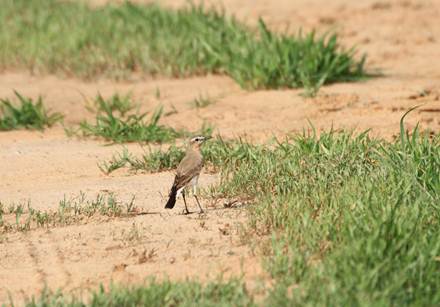

Isabelline Wheatear at Chobe – Botswana
© Stefan de Meillon
The other big attraction over the past few days has been in Kwazulu Natal where the PACIFIC GOLDEN PLOVER first reported from the Nibela Floodplains disappeared and was then found at Mpempe Pan. It seems likely that it was the same bird that moved to Mpempe. From subsequent reports received this bird was last seen on Saturday.
Also at Mpempe Pan at least 10 CASPIAN PLOVERS were also seen and what especially made this a good sighting was the fact that they were in breeding plumage and showing the distinctive chestnut breast band.
Although not rarities the following two species are not easy to find in the province and there may be some of you interested in these. A ROSY-BREASTED LONGCLAW was present at Nibela Floodplains and a EURASIAN CURLEW was seen at the uMfolozi River accessed by walking down the beach at St Lucia.
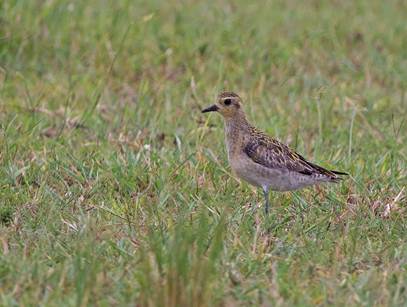
Pacific Golden Plover
© Niall Perrins
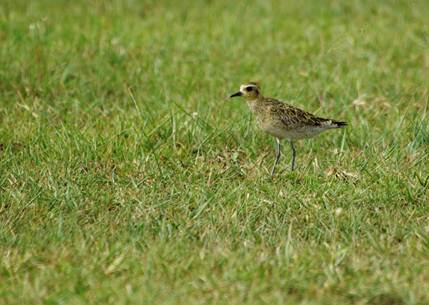
Pacific Golden Plover at Mpempe Pan
©Ivan Pretorius
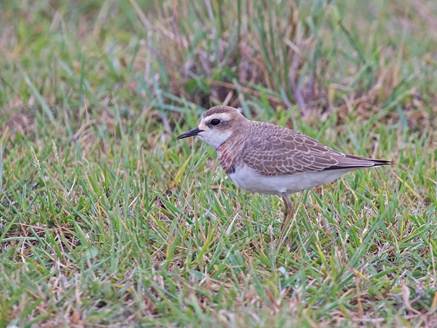
Caspian Plover at Mpempe Pan
© Niall Perrins

Caspian Plover at Mpempe Pan
© Ivan Pretorius
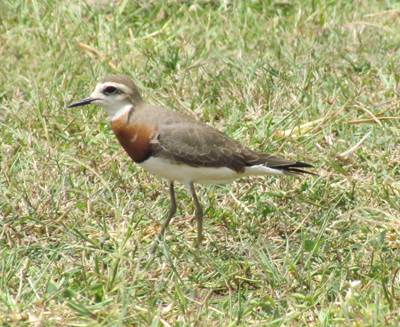
Caspian Plover at Mpempe Pan
© John Cox
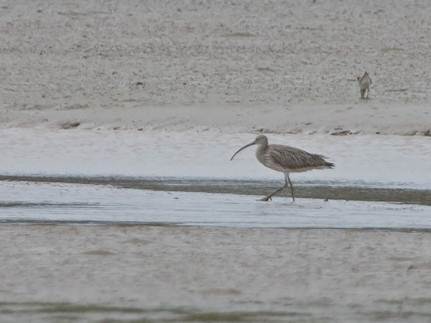
Eurasian Curlew at uMfolozi River – St Lucia
© Niall Perrins
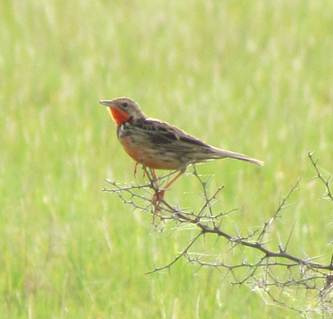
Rosy-breasted Longclaw at Nibela Floodplains
© John Cox
Moving to the Western Cape, there has been a few new reports of a PECTORAL SANDPIPER at the Strandfontein Sewage Works. This may be the same individual that was seen late last year.

Pectoral Sandpiper at Strandfontein Sewage Works
© Simon Walker

Pectoral Sandpiper at Strandfontein Sewage Works
© Margaret Maciver
The Northwest Province and in particular Kgomo Kgomo has seen more people connect with the PECTORAL SANDPIPER. This particular individual has now been at the same spot for over a month.

Pectoral Sandpiper at Kgomo Kgomo
© Jacques van Wyk
In the Eastern Cape and of regional interest was a BLUE-CHEEKED BEE-EATER seen at Paradise Beach – Jeffrey’s Bay on Sunday. Also in the province was a YELLOW-BILLED STORK at the Kei Mouth yesterday, a BATELEUR in Addo National Park, and an unfortunate sighting of a COMMON MYNA at Graaff Reinet today.
The Northern Cape produced an out of range LILAC-BREASTED ROLLER outside of Copperton on Friday
Continuing with regional rarities, a EUROPEAN ROLLER was seen today at the top of the Huis Rivier Pass outside Ladysmith in the Western Cape
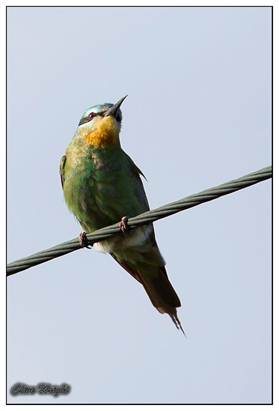
Blue-cheeked Bee-eater at Paradise Beach
© Clive Wright
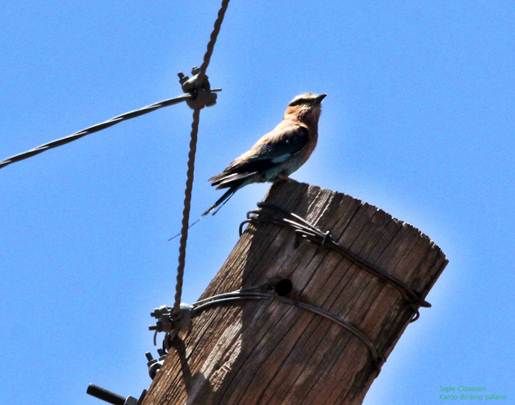
Lilac-breasted Roller at Copperton
© Japie Claassen
Lastly a few subscribers have brought to our attention that the Greater Sand Plover at Vleesbaai shown in the report for 3 January is in fact a juvenile Kittlitz’s Plover. Apologies for any confusion with that one!
Please remember that while Trevor is away, André Marx and myself will be handling all rarity reports. Please feel free to contact us.
André Marx:
083 411 7674
Robert Wienand
083 299 2484
Thank you to all observers who have contributed their records. Please continue to send through any reports of odd birds as well as continued updates on the presence of rarities already previously reported, no matter how mundane you think they may be. Even if you think someone else has probably sent in a report, rather send the report yourself as well. The only way to improve this service and to make it as useful as possible to everyone is if it can be as comprehensive as possible.
Kind regards
Robert & André
